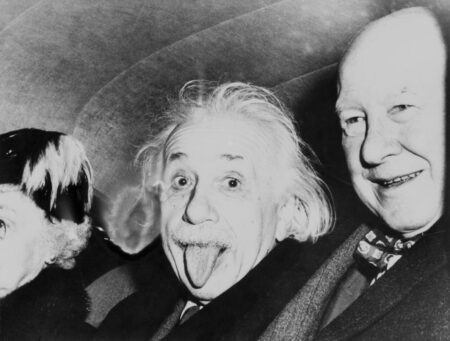B.D. Dalton II, Lazy Overachiever, deal-maker, author and podcast host of Grow Sell and Retire, Director at Rockfine Group.
A business’s value add is rarely the thing it sells. I believe it’s instead what happens down the chain because of it.
To show you what I mean, think about the power of the tiny stopper that sits in the hole of a coffee cup’s sipping area that you bought on the go from a popular chain. It’s a piece of plastic that likely costs less than half a cent to provide but can help foster significant brand loyalty.
Picture this: My wife’s headed to a critical meeting. Her outfit isn’t just clothes; it’s curated armor representing confidence and professional presence. She grabs a coffee for the final touch of fuel. Without that little stopper, one small jolt in her car could transform that flat white into a disaster. A stained outfit could lead to a bad mood, which could lead to a distracted delivery at the meeting, which could then cause her to miss an opportunity and damage credibility. All of that is prevented by a piece of plastic that costs virtually nothing.
But here’s the truth: The value isn’t stopping coffee from spilling. It’s protecting confidence and controlling perception. That’s the actual value add.
Most businesses completely miss the reality that their real value is in their downstream effect. They focus on features, specifications and immediate deliverables, and they’re so busy explaining what they do that they forget to articulate why it matters. What’s the ripple effect? What’s the downstream impact that makes clients say, “I couldn’t live without this”?
This perspective shift isn’t just philosophical—it’s practical and potentially profitable. When you understand your true value add, pricing discussions can transform, and you may even see retention rates climb and referrals flow more naturally. And it’s all because you’re speaking to what actually matters.
Beyond Features: The Downstream Effect
In my experience, most businesses define themselves by features: “We’re a marketing firm that does SEO.” “We’re a facilities management company.” “We do IT support.” You might be profitable playing this game. You might even be successful. But you could be leaving serious money on the table if you’re only selling the function.
You’re not an SEO firm. You’re the reason someone gets acquired because they own page one.
You’re not a facilities management company. You’re why a landlord sleeps at night and hits their key performance indicators.
You’re not IT support. You’re the invisible force that stops that one system crash that could cost a client $50,000.
Business owners who understand their true value add can unlock something powerful. They move from transactional to transformational, from cost to investment, from vendor to partner.
How To Discover Your Real Value
So, how do you find your own stopper story? Start by asking what breaks for your client if you disappear tomorrow. What’s the fallout? Will sales slow? Will productivity dip? Will reputation suffer? This isn’t arrogance. It’s understanding your downstream impact. If you’re just a checkbox on an invoice, you haven’t uncovered your value yet.
Consider what happens three steps beyond your service. That’s where the real value lives. That’s where clients feel the impact most deeply. And that’s what they’ll pay premium prices to secure. In my view, the businesses that dominate their markets don’t necessarily have better products or services; they have better stories about the change they create. They sell transformation, not transactions.
Think about what bigger outcomes happen because you do your job well. A lawyer isn’t just drafting documents; they’re removing risk so their client can sleep. An accountant isn’t just filing tax returns; they’re freeing up headspace for better decisions. A coach isn’t just hosting sessions; they’re pushing a founder into clarity and scale.
Now, consider the most emotional moment a client has had because of your work. Did your intervention save someone from burnout? Did your project help land a contract or raise funds? Did a client breathe a sigh of profound relief when you solved something they couldn’t? These stories are your gold. These are your “coffee stopper” moments.
Once you’ve nailed your real value add, you can charge differently, market smarter and position with power. People pay for what they understand. If you tell them you’re a “consultant,” they’ll compare you on cost. If you tell them you “double conversion rates,” now we’re talking outcomes.
Think about it: That little stopper isn’t sold separately. It’s built into the customer experience, and it’s unforgettable. That’s how your business should land: essential, sticky, trusted.
The Takeaway: Focus On Impact
The companies that charge the most aren’t the ones with the best features. I believe they’re the ones that understand and communicate the downstream impact of what they do. I’ve worked with businesses across dozens of sectors, and the pattern is clear: Those that can articulate the full chain of value they create—not just what they deliver, but what happens because of it—tend to perform best in their markets.
They don’t sell air conditioning; they sell productivity increases when employees aren’t sweating through meetings. They don’t sell HR software; they sell reduced turnover and institutional knowledge preservation. They don’t sell financial services; they sell peace of mind and legacy protection.
Start collecting your “stopper stories.” Where are the subtle but powerful value points hiding in what you do? Ask your clients what changed after working with you. Look for the unexpected dominoes that fell.
The future of profitability isn’t in what you do—it’s in what happens because you did it. Don’t sell the coffee. Sell what happens because of it. If you’re aiming to scale and charge more, stop focusing on features and start selling outcomes. That’s where the real money is.
Forbes Business Council is the foremost growth and networking organization for business owners and leaders. Do I qualify?
Read the full article here











